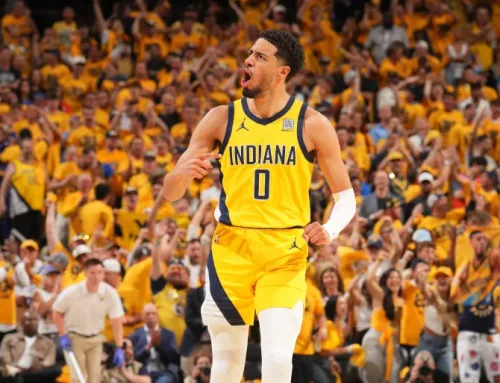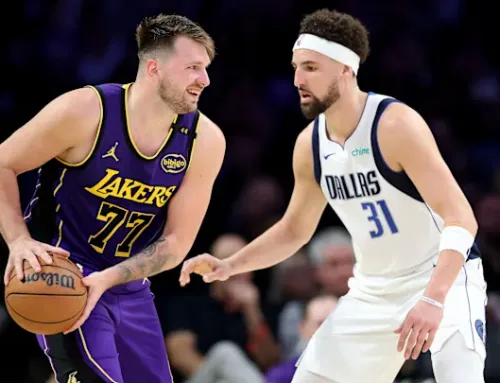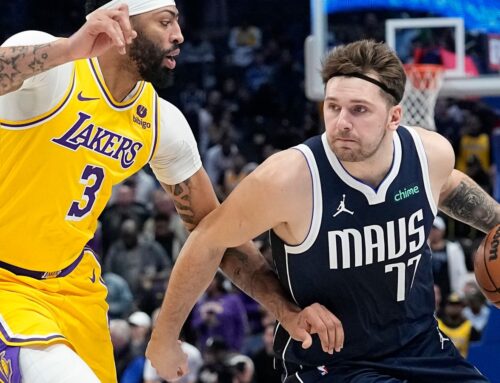2021-22 All NBA Defense Teams
By: Avi Tyagi
This might be the hardest awards-bestowing exercise imaginable. There are too many quality defenders and it is really difficult to watch tape of at least 35-40 different candidates and evaluate who benefitted the most from their surrounding scheme and who formed the basis for their team’s chosen scheme due to superlative strengths and/or versatility. Here are the selections.
First Team: Smart Jrue Giannis Al Gobert
Second Team: Herb Dort OG Tucker Bam
Low Minutes team: Payton Caruso Matisse Dray AD
All-Defense does not acknowledge a third team so I decided to form a team full of the best candidates who either did not play enough minutes or games to qualify for contention for a spot on the actual teams. These assorted selections played tremendously in the minutes they were available. AD might not have had a peak, shutdown defensive season, but he was still incredibly impressive as a versatile center option with far leakier perimeter threats surrounding him. The lofty standards he is often compared to are more a testament to what his ceiling has previously been: A First Teamer. Draymond just missed too many games and assigned more of the tough responsibilities as a point-of-attack defender to Wiggins than he typically has in years past. He’s also still the most versatile forward option in the league, likely one of the best playoff defenders, and probably the per-minute DPOY. Payton and Matisse were incredible, but both are low-minute bench options who enter games specifically to pester guards and provide enough as dunker spot threats to remain offensively viable. The Caru-show came to Chi-Town this season and performed wonderfully as a pesky guard capable of handling forwards in short stints, as a terrific point-of-attack guard defender without foul-happy tendencies, and as an exceptional communicator. I’ll elaborate upon my official teams now.
Because of how disputatious picking defenders can be, I set restrictions at 1700 minutes played for a minimum total, ideally focusing on starter-level minute loads and responsibilities. Originally, I had stricter restrictions for positional designations and minute totals but those were softened by the end of the regular season as certain candidates began to place finishing touches on excellent campaigns. From there, I began evaluating. Very early on, 3 candidates emerged from the pack due to their unparalleled versatility, their capability to switch onto several different types of players, and their focus on and off-ball. Those were Giannis, Bam, and Smart. Gobert’s rim protection, even in what may be a down year, was still so potent that (with a slight edge in minutes played) he earned the first team center spot over Bam. Those were 4 spots filled. The other 6 selections were where the challenge became especially difficult. Due to the variance in how players performed against certain styles or matchups, I must have switched back and forth between at least 25-30 different candidates. I’ll discuss my first-team guard selections first.
Sorting through guard nominees is always difficult, but in many ways, more so this year. Even Smart has an interesting defensive footprint this season. Due to the amount of quality defenders on the Celtics’ roster this season, Smart often gets to take plays off while minding only the secondary or tertiary action of a play. Offensive players know not to isolate against him, so any opposing dribbler tries to manufacture open shots against Smart by calling for quick picks that banish him from the play for his initial proximity and eagerness to crowd airspace. Yet, with all that said, no guard defender is as versatile, is as destructive to an offensive play when he enters the action, is as physically potent, and is as important a communicator within their team scheme as Marcus Smart. Among guards, he’s somehow within the top 10 for charges taken, defensive loose-balls recovered, 3-point shots contested, and deflections. That’s despite most offensive actions steering clear of him. His forte might be his tenaciousness in the post against forwards on switches. Double teams can arrive especially late and might not need to at all because Smart can either draw a charge or swipe away the entry pass (2.6% steal rate). A similarly exceptional guard with an interesting defensive portfolio nabs the other first team guard spot. Jrue is step for step with Smart on those top 10 lists, with Jrue taking less charges but contesting more shots due to his nature as the Bucks’ primary perimeter defender. Jrue’s ascendance as an offensive player this season, with growth as an initiator due to a tighter dribble and a far more effective pullup three (coupled with the return of Wes Matthews) led to lessened defensive responsibilities for him throughout the regular season. He went entire stretches where his only duties were to take low-man responsibilities if needed or watch for back door cuts. However, against the best guards in the league, when the moment calls for it, he still stepped up to the plate and delivered. As a pick and roll defender, a well-set screen is often tough for him to navigate and may set up some open perimeter shots. As an isolation defender though, he may be the single toughest guard to go solo against in the league and he rarely gifts fouls in those positions either. I’m not sure I need to say more other than that his pedigree and the endorsements he receives from competitors agree wholeheartedly with much of his tape.
My entire first team is almost complete, save for one forward spot. It’s time for me to issue a mea culpa to Al Horford for a renaissance season. I was skeptical of the Celtics’ trade for him (despite his proficient play for the Thunder when available last season). As late as February, I was not even confident that he would be a part of the Celtics closing 5. As the Celtics continued to tear up the league and unseat other contenders in the standings to establish themselves as the favorites in my book (and as one of the best teams in recent vintage), my early oversight of Horford’s defensive capabilities has come sharply into focus. Previously, I had considered the Celtics turnaround to be driven primarily by the defensive excellence of the scheme and surrounding talent that protected Horford and maximized his strengths. While that is all true, in doing so, I completely undersold Horford’s own capabilities. He’s more mobile in isolation than I gave him credit for, which pairs well with Rob Will and allows for two mobile forward/center types to share the court at once. Horford has also continued to govern the paint with ruthless authority, stamping out shots to the tune of opponents’ shooting 9.5% worse than expected within 10 feet of the rim. Al commands the Celtics backline defense as a primary communicator, while also continually challenging the opposition’s most potent paint presence for the majority of every contest. That total package is undeniable and so Al earns the respect he rightfully deserves.
My second team is basically chaos. This is where the exercise escalated significantly in difficulty and that does not even include several of the centers who might have been selected if not for Gobert and Bam. Let’s get to the “guards” first.
Ok so yes, Herb and Dort are not guards, I know I know! Sorry, sorry, I’m really stretching the definitions here, but their play has truly been astounding. I’ll quickly provide a defense for my positional designations. In practice, both players have started several games in a guard slot. Herb began getting listed as a starting shooting guard for the Pelicans when the Hayes-at-the-4 lineup became prominent for their playoff push, while Dort continues to start at the 2 based on whatever combinations the Thunder choose to throw around him for any given game. These are flimsy loopholes at best, but work with me here. These are two of the best defenders in the league and each primarily takes on primary opposing guards. With that prelude out of the way, let’s actually examine their play.
Herb stepped in a rookie to be one of the league’s most feared lockdown defenders, due to his big-play ability and aptitude as an isolation defender against many of the best guards and wings in the league. He can still be beaten with elite speed, craftiness, or power, but he often uses his excellent hands, attentive focus, proper technique, and accurate swipes to get back into the play and alter the shot. As a result, he’s 4th in the league in contested 3-pointers. However, his best work occurs when he crowds drivers (often compelling them to pass haphazardly), or when he anticipates a passing lane meant for recycling possession off of a stalled drive (a big reason he’s 3rd in the league in deflections). The list of qualified players (at least 50 games and 1500 minutes played) to still maintain at least a 2% steal rate and 2.5% block rate is 4 names long: Matisse, Herb, Covington, and Bam. That’s especially impressive, considering that Herb manages this feat while taking the most taxing opposing matchups for a major portion of every match.
I probably need to explain my inclusion of Lu Dort. I must have cycled through at least 20 names just for this one spot. I really wanted to get Rob Will or Mobley a spot on this list, but even I can’t stretch positional designations far enough for that. I’d like to also shoutout Scottie Barnes, who was oh-so-close to making this list due to his incredible versatility, but is still developing as a vertical rim protector and a drive deterrent. Let’s get this out of the way first: Dort’s not a phenomenal defensive playmaker either, with low steal and block rates. He also tends to drift a little too far off of spot-up shooters at times, overhelping to open up easy shots on stalled plays. Now let’s get to the strengths. He’s an absolute brick wall who can stone off drives by almost any opposing guard, yet he maintains the lateral agility of a small guard. On a roster with almost no defensive help around him, Dort is the one often left to put out fires all around the court. He flies around to rotate to assignments that aren’t even his in order to prevent any opening that has been created from blossoming into a clear advantage. He jumps in for strong-side help blocks when his teammate has conceded a drive with no one home. His screen navigation is more than acceptable when considering his size. This all occurs despite another increase in his offensive load (with improved efficiency on isolations and spot-ups as well). That leapfrogged him above the muddled set of candidates for a place on the podium. Speaking of versatile Raptor defenders, I’m now going to segue into presenting the second-team forwards. These may be unconventional picks, but both wing selections are high-caliber top-tier defensive forces when available. OG Anunoby is still distinctive among his peers. Upon watching the tape, even in a season where a larger offensive load has restricted some of his impact on the defensive end, there just are not wing starter options who are as adept at guarding star forwards on or off-ball, regardless of defensive scheme, all while credibly being able to switch onto guards or even centers for short spurts and also being a true defensive playmaker. The acclaim continues to be well earned.
P.J. Tucker has enjoyed a renaissance season with Miami on all fronts. I could spend an extra 10 minutes discussing how the Heat’s creative spacing has opened up lanes for Tucker to explore his floater game, or how effective the Heat have been at providing quality spot-up corner 3s for him, but I digress. On defense, Tucker has continued to provide more of the traditional Tucker experience with his tenacity in screen navigation, his voracious appetite to dive onto the hardwood for fresh possessions, and his unflappable focus on keeping his primary matchups well outside the paint. What’s helped increase his effectiveness has been the elan of the roster around him. Upon examining candidates for this exercise, the Heat defenders clearly stood out in terms of their aggressiveness in passing and driving lanes to produce deflections. At least 5 Heat defenders averaged more than 3 deflections per 48 minutes, most in the league. That’s not even counting Victor Oladipo, who accomplished the same feat in his cup of coffee at the tail end of the season. The Heat scheme is set up to position defenders in the gaps but between the primary attacker and their passing lane to a wide-open corner shooter. In such a healthy defensive environment, Tucker has flourished above expectations. The opponent’s best player (particularly wings on teams with limited off-ball actions), immediately gets nullified in a match against Tucker. P.J.’s strength and physicality often completely gate off the block, forcing opponents to either pass out of the set or take heavily contested mid-rangers or 3s. His defensive excellence, and the team’s capabilities to stifle any interior attacks and clog passing lanes have opened up far more opportunities to pre-switch and protect weak links and reduced their necessity for pure zone looks. On a team with the switchable Bam patrolling the paint, and some assortment of Butler, Lowry, Vincent and Caleb Martin prowling along the perimeter in any specific configuration, Tucker has the luxury to approach his matchups with even more physicality. Opponents can rarely ever create quality matchups out of switches, and P.J. is one of the best forwards at stalling out offenses by refusing to switch and pasting himself to the ballhandler. To put him on a team that so thoroughly disincentivizes opponents’ drives and generates havoc and turnovers to such a degree is borderline mean. It’s a real testament to fit, schematic flexibility, and talent.




